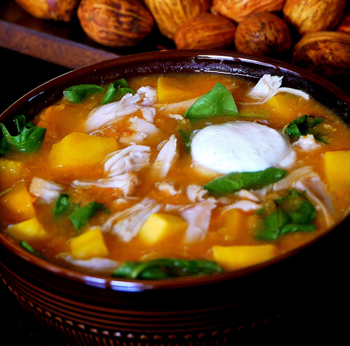From The LA Times
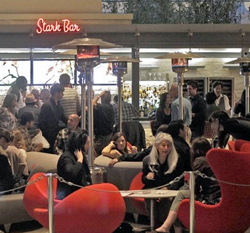 Each year I keep a running log to track restaurants slated to open
each month. When this January rolled around and I started my new list, I
fully expected the pace of openings to slow to a trickle.
Each year I keep a running log to track restaurants slated to open
each month. When this January rolled around and I started my new list, I
fully expected the pace of openings to slow to a trickle.
That hasn't happened. Instead, despite the curdled economy, L.A.'s restaurant scene this year has busted out with new energy and invention. And it continues to inspire the entire country. I can't tell you how many New Yorkers and even, gasp, San Franciscans have told me that Los Angeles is now their favorite eating town. It's about time we got some deserved attention.
Instead of treading the tried and true, L.A.'s restaurateurs and chefs are experimenting with the wild and crazy, with pop-ups, crossovers and new genres. This year's crop of new restaurants includes sandwich shops, noodle joints, izakaya, wine bars, far-flung cuisines, wood-burning-oven specialists, plenty of communal tables and oddball bar concepts. Diverse doesn't begin to describe what's happening now.

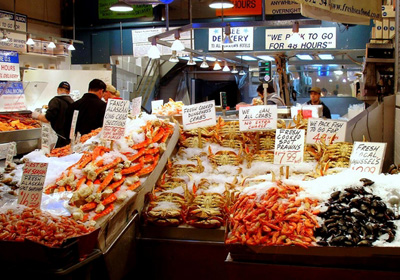 When it comes to serving wine with seafood, we want the wine to marry with the delicate flavors of the fish. In other words, the wine or the fish should not upstage each other in any way. Remaining complementary is key.
When it comes to serving wine with seafood, we want the wine to marry with the delicate flavors of the fish. In other words, the wine or the fish should not upstage each other in any way. Remaining complementary is key.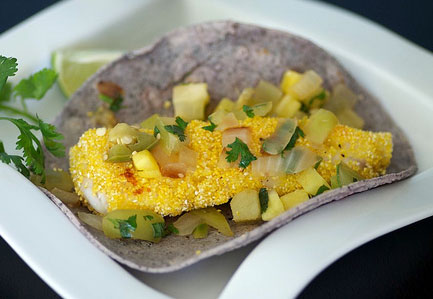 Buying fish used to be easy. You'd go to the seafood store, look in the case, select your fish, and go home to cook. Nowadays, it's a lot more complicated. If you're pregnant, you need to avoid mercury-rich fish; farm-raised fish are good, except for when they're bad; some species which are endangered still show up on the menus of restaurants. All of this leads to confusion and often frustration on the part of many consumers.
Buying fish used to be easy. You'd go to the seafood store, look in the case, select your fish, and go home to cook. Nowadays, it's a lot more complicated. If you're pregnant, you need to avoid mercury-rich fish; farm-raised fish are good, except for when they're bad; some species which are endangered still show up on the menus of restaurants. All of this leads to confusion and often frustration on the part of many consumers.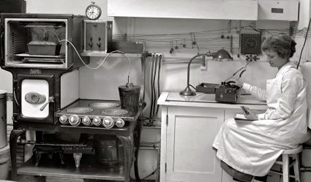 A few lines in a recent “Quick Takes” column at Inside Higher Ed were enough to make me put down the faux-croissant I’d just purchased at my school’s café and seek out the full story in The Boston Globe: the most popular class at Harvard right now is “Science of the Physical Universe 27.”
A few lines in a recent “Quick Takes” column at Inside Higher Ed were enough to make me put down the faux-croissant I’d just purchased at my school’s café and seek out the full story in The Boston Globe: the most popular class at Harvard right now is “Science of the Physical Universe 27.” You will be pleased to know that I will not rant, complain, sigh or otherwise indicate my GREAT displeasure with the week that has just passed. Suffice it to say that Mistakes Were Made. I will, instead, look at the good stuff: we ate our first Michigan asparagus of the year, all of the flowering trees are just popping into bloom and looking and smelling so good that it’s almost surreal, the vegetable seeds that Sam and I planted are mostly coming up, I found a fantastic bread recipe, and I got a beautiful box of lemons in the mail from Eric, in San Francisco. (About which more, later). In the TMI department, I started meditating this week and found that I can sit cross-legged for 20 minutes, and that I can keep random thoughts from intruding about 10% of the time. It may not sound like much, but my mind is a busy place, and I find that my “ohms” are frequently swept away by a recollection of the picture that was taken for my London Tube pass 24 years ago, or musings about which Netflix movie to watch.
You will be pleased to know that I will not rant, complain, sigh or otherwise indicate my GREAT displeasure with the week that has just passed. Suffice it to say that Mistakes Were Made. I will, instead, look at the good stuff: we ate our first Michigan asparagus of the year, all of the flowering trees are just popping into bloom and looking and smelling so good that it’s almost surreal, the vegetable seeds that Sam and I planted are mostly coming up, I found a fantastic bread recipe, and I got a beautiful box of lemons in the mail from Eric, in San Francisco. (About which more, later). In the TMI department, I started meditating this week and found that I can sit cross-legged for 20 minutes, and that I can keep random thoughts from intruding about 10% of the time. It may not sound like much, but my mind is a busy place, and I find that my “ohms” are frequently swept away by a recollection of the picture that was taken for my London Tube pass 24 years ago, or musings about which Netflix movie to watch.